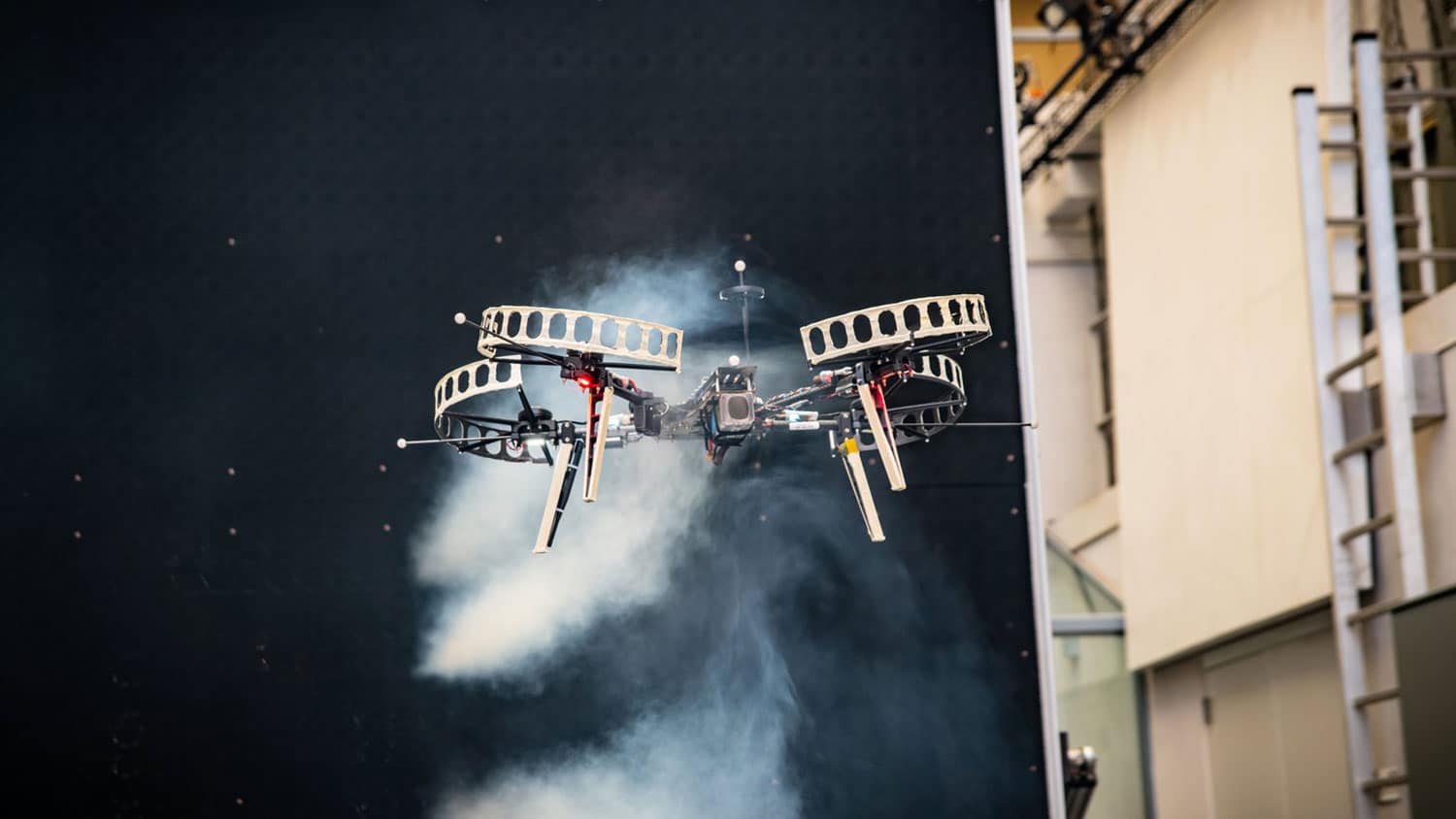
Drones, also known as autonomous flying vehicles, have successfully proved their capabilities in various fields such as transport, surveillance, security, and many other application; however, most of them still have their limitations. To be truly useful, drones will need to learn to navigate real-world weather and wind conditions.
Now, a team of engineers from Caltech has developed Neural-Fly, a deep-learning method that can help drones cope with new and unknown wind conditions in real-time just by updating a few key parameters.
Neural-Fly neural network teaches the drone how to survive extreme wind similar to tornado or hurricane conditions using artificial intelligence (AI) and machine learning. Researchers first obtained as little as 12 minutes of flying data in various wind conditions. Building on that information, autonomous quadrotor drones equipped with Neural-Fly learn learned how to respond to strong winds so well that their performance significantly improved.
In the challenging wind conditions generated with the CAST Real Weather Wind Tunnel, test drones were tasked with flying in a pre-described figure-eight pattern while they were blasted with winds up to 27 miles per hour. This wind speed is twice as fast as speeds encountered by the drone during neural network training, which suggests Neural-Fly could extrapolate and generalize well to unseen and harsher weather.
The error rate following that flight path is up to 2.5 times to 4 times smaller compared to drones equipped with the current state-of-the-art adaptive control algorithms that identify and respond to aerodynamic effects but without deep neural networks.
Though landing might seem more complex than flying, the Neural-Fly, compared to previous systems, can learn in real time and respond to the changes in the wind on the fly. Further, the team has shown that flight data gathered by an individual drone can be transferred to another drone, building a pool of knowledge for autonomous vehicles.
The test drones were equipped with a standard, off-the-shelf flight control computer that is commonly used by the drone research and hobbyist community. Neural-Fly was implemented in an onboard Raspberry Pi 4 computer that is the size of a credit card and retails for around $20.
The research was funded by the Defense Advanced Research Projects Agency (DARPA) and Raytheon. There is no information on Caltech’s future plan for its Neural-Fly.
Caltech’s Neural-Fly teaches drones to survive extreme wind
Source: Tambay News

0 Comments